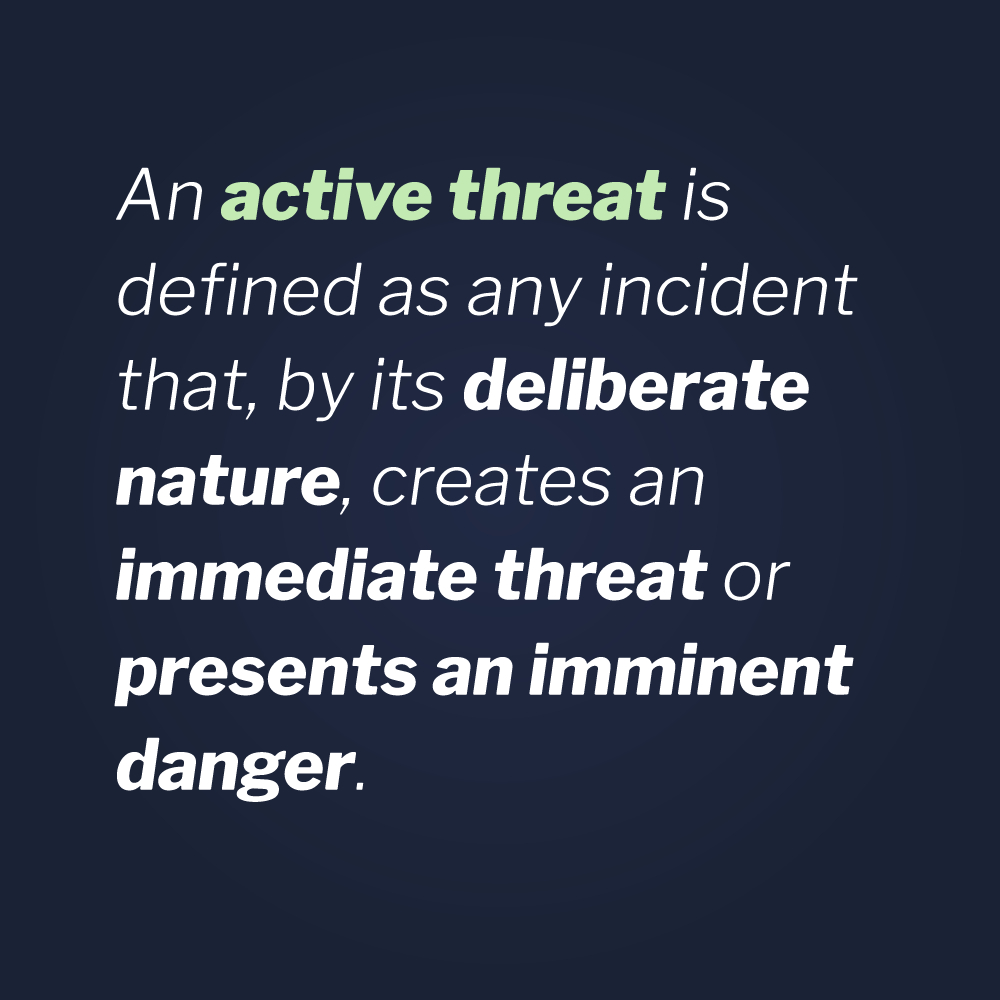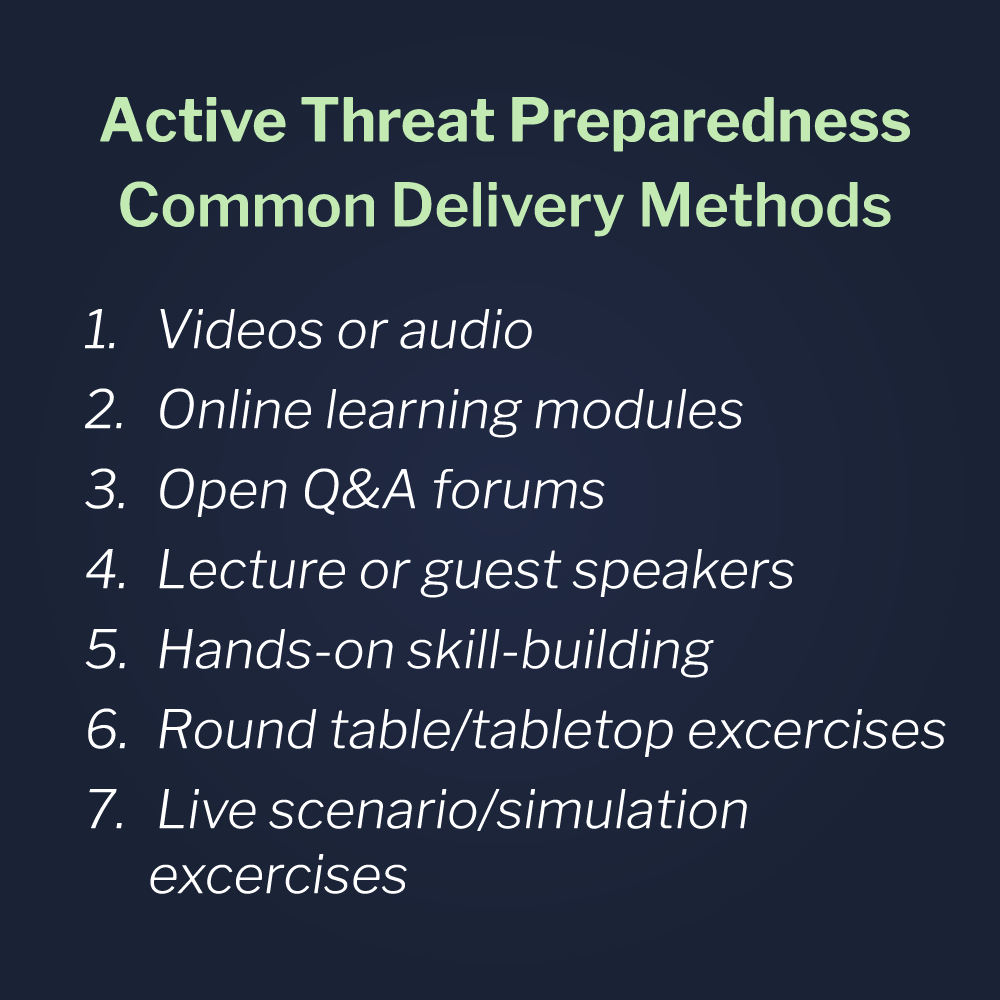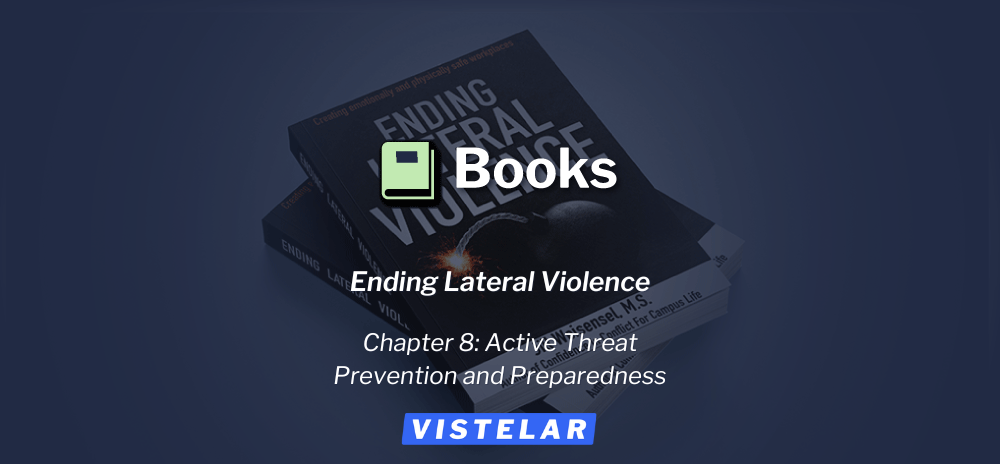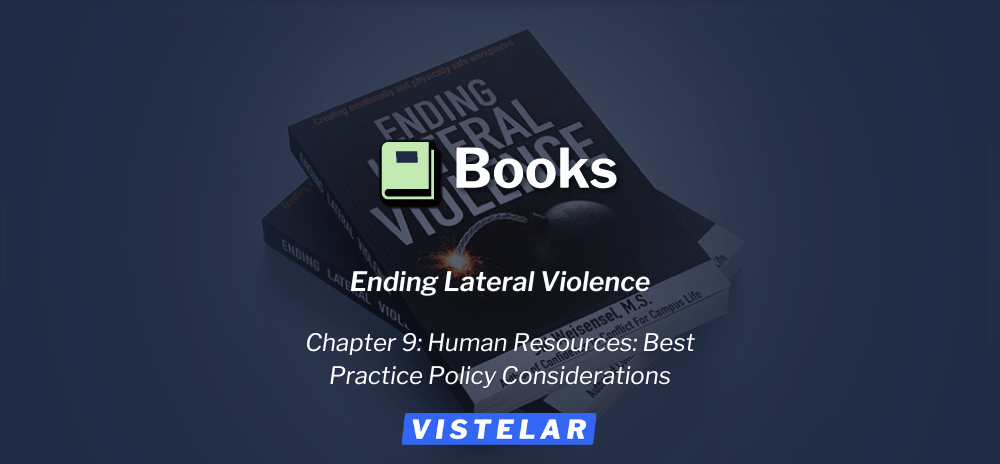Enjoy this excerpt from one of our published books.
Chapter 8
Active Threat Prevention and Preparedness
You can make a difference. Violence and threats of violence often result from frustration and a communication breakdown. People want to be heard and understood; empower them to speak up. Then listen—truly listen—to identify the signposts along the way and stay “left of bang.”
As cited throughout this book, lateral violence can lead to physical violence, and in the workplace, lateral violence can kill. In a study referenced in the book The Price of Incivility, Drs. Christine Porath and Christine Pearson found that a shocking 94% of victims claim they somehow settle their scores with the offenders. In addition, if you recall from Chapter One, there is a direct correlation between workplace lateral violence and active shooter incidents. (Modell, 2013) The dissociation of those victimized and the subsequent desire for retaliation could result in an active threat incident. (Morrison, Lindo, Aiken, & Chin, 2017) An active threat is defined as any incident that, by its deliberate nature, creates an immediate threat or presents an imminent danger.
Pearson found that a shocking 94% of victims claim they somehow settle their scores with the offenders. In addition, if you recall from Chapter One, there is a direct correlation between workplace lateral violence and active shooter incidents. (Modell, 2013) The dissociation of those victimized and the subsequent desire for retaliation could result in an active threat incident. (Morrison, Lindo, Aiken, & Chin, 2017) An active threat is defined as any incident that, by its deliberate nature, creates an immediate threat or presents an imminent danger.
Therefore, even though the focus of this book is on lateral violence, it would be an inappropriate omission not to include information relevant to the prevention and preparation for an active threat incident. Active threat incidents have sadly become a common occurrence.
If you conduct an online search of active shooter events, the return will be countless pages of results referencing dozens of incidents. The three most well-known active shooter events involved schools: Columbine High School (1999), Virginia Tech (2007), and the Sandy Hook Elementary school shooting (2012). However, only a third of active shooter events happen in schools, while the majority happen in other “soft-target” environments such as workplaces, places of worship, and retail environments.
What is Active Threat Prevention?
Active threat prevention includes following your organization’s workplace violence policies and procedures, which may include any or all of the following:
- Workplace violence zero tolerance.
- Eliminating gateway behaviors (e.g., shouting, cursing, name-calling, aggressive posturing), and if they occur, responding appropriately.
- Mandatory reporting of pre-incident indicators, overt threats, and workplace violence incidents, with impunity and anonymity, if desired.
- Mandatory training in threat assessment and safety measures.
- Mandatory reporting to the authorities.
Active threat incident prevention also involves many additional strategies, methods, and tactics, including:
- Identifying pre-incident indicators.
- Establishing situational awareness.
- Being cognizant of violence triggers.
- Applying both non-escalation and de-escalation methods
- Knowing your options and having a pre-planned, practiced response for taking appropriate action.
If you experience violations of your workplace violence policies and procedures, document and report them. Policies and procedures are of no value if they are not practiced.
Red flag pre-incident indicators
With respect to active shooter incidents, there are several identifiable behaviors (or red flag pre-incident indicators) you should be watching for. While not always predictive of violent behavior, specific, identifiable behaviors of concern include:
- Past behavior.
- Often exhibiting angry or argumentative behavior.
- Blaming others for their problems.
- Failing to take responsibility for their own actions.
- Retaliating against perceived injustice.
- Increasing belligerence.
- Ominous, specific threats.
- Hypersensitivity to criticism.
- Recent acquisition of or fascination with weapons.
- Preoccupation with violent themes.
- Interest in recently publicized violent events.
- Outbursts of anger.
- Extreme disorganization.
- Noticeable changes in behavior.
- Homicidal or suicidal comments or threats.
No one specific behavior determines that someone will engage in active killing, but a cluster of several may. It is important to understand these warning signs and their role in leading up to an active shooter or other potentially violent event.
In addition to increasing situational awareness and identifying red flags, organizations can work to reduce and prevent violent incidents through target hardening and environmental design.
A few of the common target hardening concepts are:
- Reinforcing current policies and procedures.
- Improving access control, such as limiting entry and exit points and clearly identifying building and property boundaries.
- Displaying visible signs and safety rules identifying open and closed access areas.
- Monitoring and ensuring lockable doors are locked throughout the workday.
- Managing the flow of pedestrian traffic within the organization.
- Defining and enforcing a visitor screening process upon entry.
- Enforcing visible ID systems, such as lanyards, key cards, or name tags with a photo of the person wearing the badge.
- Using monitored surveillance, such as camera systems or security personnel.
- Improving lighting.
- Identifying blind spots throughout the facility that hinder surveillance cameras.
- Visibly enforcing and reinforcing on-site security.
Your organization should have policies and procedures on active threats and implement a training program. Part of that training program should include an active threat preparedness plan, sometimes called an Emergency Action Plan, or EAP. A well-thought-out plan is important because each active threat situation is unique, and active threat events unfold and escalate rapidly. Furthermore, every facility is unique in building structure and design, the number of employees within, variability in public access, and day-to-day activities.
Active Threat Preparedness
Before an effective active threat response plan can be put into place, conduct a review of the current location, building structure, and staff schedules. This review should include an organizational questionnaire and a complete site assessment.
An active threat preparedness plan should include (at a minimum):
- The definition of an active threat.
- Immediate action steps for defense.
- An emergency communication plan.
- Event priority actions, such as escape, barricade, and defend.
- What to expect from law enforcement on scene.
- What to expect or what can be done by employees during the event.
- The identification of assembly or staging areas.
- After action considerations.
All of these steps need to be flushed out and understood. This cannot just be a document placed into a file; each element should be trained.
Training will better prepare individuals in the event an active threat occurs. Determine the appropriate frequency, length, and delivery format for your organization. Common delivery formats for active threat preparedness include:
- Videos or audio.
- Online learning modules.
- Open question and answer forums.
- Lecture or guest speakers (such as local law enforcement) on the topic.
- Hands-on skill-building activities.
- Round table or “tabletop” exercises.
- Live scenario or simulation exercises.
Creating an effective active threat preparedness plan requires three critical steps:
1. Planning out potential timelines.
An initial timeline should map an effective hiring and termination processes long before an active shooter event could unfold. This includes but is not limited to employee evaluations, performance improvement plans, and early warning systems. Additionally, identifying a timeline can include the first moment the intruder(s) or attacker(s) would enter the property all the way through the time it will take for you or the police to arrive and stop the threat.
2. Ensuring everyone understands the various roles and responsibilities in the event of an active threat incident.
You should train and dedicate staff to help in the event of an emergency or evacuation. These staff may play the following parts in incident intervention and response:
- Help defuse violent situations while acting within legal and ethical guidelines.
- Prevent, disrupt, and deter crime.
- Minimize property loss and damage.
- Provide technical advice and support regarding physical security.
- Promote an ongoing security awareness program.
- Assist with conducting investigations of threats or incidents of violence.
- Act as a liaison with local authorities.
- Requesting arrests for acts of violence, if provided with this authority.
- Prepare for the prosecution of arrested individuals.
- Assist in the evacuation of people with varying emotional and physical capabilities.
3. Creating plan sustainability.
Additionally, this plan is only useful if it is visible, well understood by all in your organization, and constantly in front of them. This topic needs more than a “one-and-done” rollout. You can ensure the thoroughness, relevancy, and sustainability of your active threat preparedness plan by:
- Investing in training or instructors.
- Reading articles.
- Listening to podcasts and webinars.
- Attending conferences on best practices.
- Reviewing video of incidents with debriefs.
- Engaging in daily huddles or roll roll calls.
- Holding weekly briefings, monthly shift training, quarterly section drills, and/or bi-annual organizational exercises.
For additional information on this topic refer to the Vistelar Active Shooter Preparedness and Response training program (please reference the section titled “Who is Vistelar” at the end of the book).
Key Takeaways
- An active threat is any incident that creates an immediate threat or presents an imminent danger.
- Active threat prevention requires following your organization’s workplace violence policies and procedures. Additional threat prevention strategies, methods, and tactics include:
- Identifying pre-incident indicators.
- Establishing situational awareness.
- Being cognizant of violence triggers.
- Non-escalation methods.
- De-escalation methods.
- Knowing your options and having a pre-planned, practiced response for taking appropriate action.
- An effective active threat preparedness plan requires three critical steps:
- Planning out potential timelines.
- Ensuring everyone knows roles and responsibilities in the event of an active threat incident.
- Creating plan sustainability.






.png?width=150&height=150&name=Podcasts-%20Newsletter%20Featured%20Image%20Template%20(5).png)


